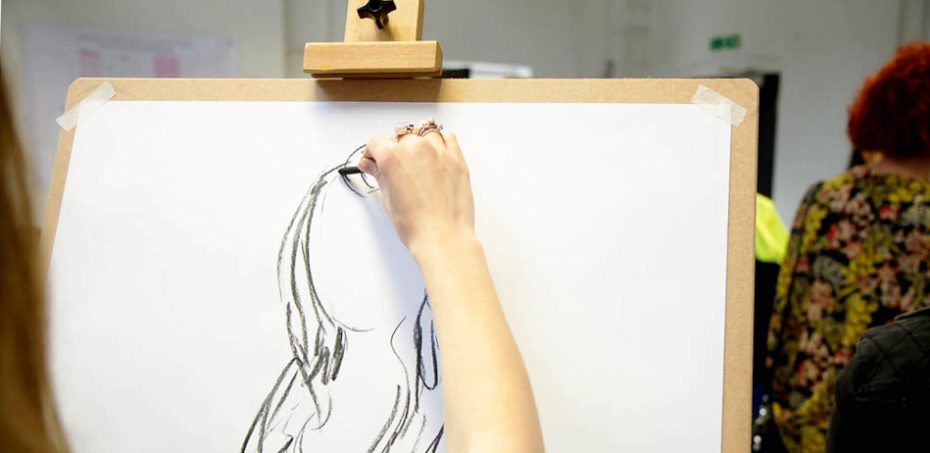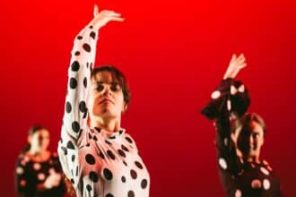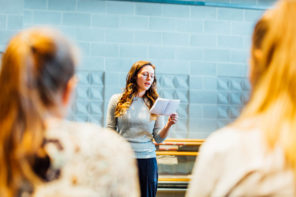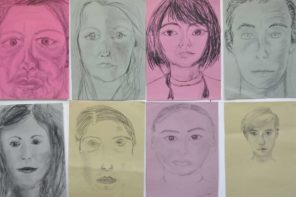Life Drawing teaches you hand-eye coordination, hones your observational skills and does wonders for relaxation. For those of you who are about to take your first class or pondering whether you should take the plunge, this article shares a few things to think about beforehand.
At first, you might be making stickmen or struggling to see a resemblance between your drawing and your muse. But each time you have a go at following and recreating the outline of the model in front of you, you will get slightly better at it, and by the end the feeling of achievement is a real buzz.
It's easy to lose yourself in the process of drawing. Look, learn, and block out the world by putting carbon to paper until the person in front of you no longer seems naked or semi-clothed, but purely a beautiful source of inspiration for your art. Jack, Rose and couch anyone?
Life Drawing has a wonderful way of making you feel like you’re both present and in your own world. There’s a meditative quality to trying to make the arm connect to the shoulder and the shoulder link up to the neck that can’t quite be encapsulated till you try it out. Here are a few things we think you should know about this very human art form before you give it a go:
Etiquette
With the social taboo that nudity brings, it’s all too natural to giggle at the thought of someone standing starkers in front of you, and that too in some very interesting positions. But once you’ve stopped blushing at the idea, make sure you respect that your model, though nude, is human.
Regardless of how confident they come across, they have probably battled with all the thoughts you would have, had you been tasked with taking centre stage in your birthday suit, and are being brave about putting their body on show. There’s certainly a lot of fun to be had in a Life Drawing class, just be sensitive to how hard life models work: they arrive at a new location, have to sit or stand for ages, hold sometimes uncomfortable poses, often in draughty rooms.
We had to draw from life at least twice a week at art college. Sometimes we just drew a few lines to show the direction of the pose and sometimes we had to do detailed, anatomically correct drawings. My first attempts were excruciatingly bad. The head was too small, the hands looked like bunches of sausages and the proportions were up the creek. But I worked away at it. Life drawing is a wonderful puzzle – you have to keep working at it.
- Francine Lawrence, Drawing tutor at City Academy
Nerves
On the flip side, the prospect of being confronted with a man or woman utterly naked can of course make anyone feel a little apprehensive, but rest assured life models are professionals. They’re efficient and know what positions are suitable for beginners or more advanced students, and will be focused on helping you focus.
And then there is the fact that you have to draw the complex human figure. If you have never tried to imitate forms from life before, the process of drawing can be daunting. A good teacher will immediately dispel any nerves and inhibitions by doing a couple of demonstrations at the start and giving clear instructions to help you hone in on the shapes and lines of the model's anatomy. Once you’re settled in, the very act, in spite of the outcome, is curiously addictive.


Mediums
Most classes use pencil, chunky graphite or charcoal.
Pencils are seen as the simplest, and generally good for starters as there is a ready made range of tones to play with across the HB grading system. What you draw is what you get. There’s very light smudging unless you’re using really soft lead like 5B, and even then you’re unlikely to eliminate your original lines. That however means pencils are quite unforgiving unless you’re willing to use an eraser constantly and risk damaging the paper. Overall, their pointed and precise tips are great for capturing detail, and they work well on smooth paper as they don't need much friction to leave a clear impression - the more you apply pressure and colour in over something, the darker and waxier it will get.
On the other hand, chunky graphite allows larger strokes, fits snuggly in the hand and therefore allows an easier, more free-flowing expressionism.
Taking that feeling to the next level is our next contender - charcoal. To the untrained eye, charcoal can seem quite one-dimensional. It has a loose powdery composition and is very black in colour. However that's exactly why it's such a lovely, playful medium - its talc like texture means it can be smudged very easily, gently rubbing it with your fingers or with the side of your hand to create different shades of grey. Once you understand how to control it, it is perfect for soft broad marks or for big bold black lines, for abstract effects or for realism work.
That's the wonderful thing about drawing – even when 20 people are looking at the same subject and using the same medium, they produce uniquely individual work.


Angles
Even if you only use chunks of graphite or charcoal, it's a good idea to have a pencil to use as a measuring tool. Extend your hand out and hold the pencil parallel - both vertically and horizontally - against the model you are looking at, and mentally lock down what angles their spine, arms and legs are at. Most people are surprised at how the eye and brain can fool us into thinking a person is standing up straight when in fact they are leaning.
Those slants can make all the difference to the rest of the drawing, so it's important to draw what we actually see, and not what we think we see: if a model is facing square on to you and their knee is bent forward in your direction, then your drawing of their leg should be fairly perpendicular because looking front on, you won't be able to see the bend of the knee, even if you know it's there.
To help get to grips with this level of attention to detail, the class might begin with the model holding poses for very short periods. These quick fire rounds of drawing are called 'gesture' poses, and really help you to warm up and see the way the body moves. Pay particular attention to where the shoulders and hips are, because they are the two axis of the body - think of them like two coat hangers, one under the other, holding the top and bottom halves of the body respectively. If you can simplify the anatomy in this way, you're well on your way to making a great figure drawing.
Drawing is meditation for me. Once I start with a pen or a pencil or a crayon I can't stop and I lose sense of time. I forget anything else that is going on in my life – you can't think about anything else when you are drawing.
- Francine Lawrence, Drawing tutor at City Academy
Time
The great thing about Life Drawing is that in just one class, you can see a marked change - if not in your drawings, in your perspective. But like anything else, it takes time to see greater leaps of improvement. Leonardo da Vinci said "that painter who has no doubts will achieve little", and even he went over and over his drawings, correcting and adjusting angles, joints, muscles and skin folds, so allow yourself to be patient and to realise that nothing is ever perfect.
We are all different - occasionally doing more lines and scribbling over parts can make a drawing look messy, and sometimes fretting over the small stuff and trying to fix things can make a complex yet exciting masterpiece. Whatever you do, it's okay. Even if you aren't happy about your work, there will be bits you're pleased with. Life Drawing is all about the journey.
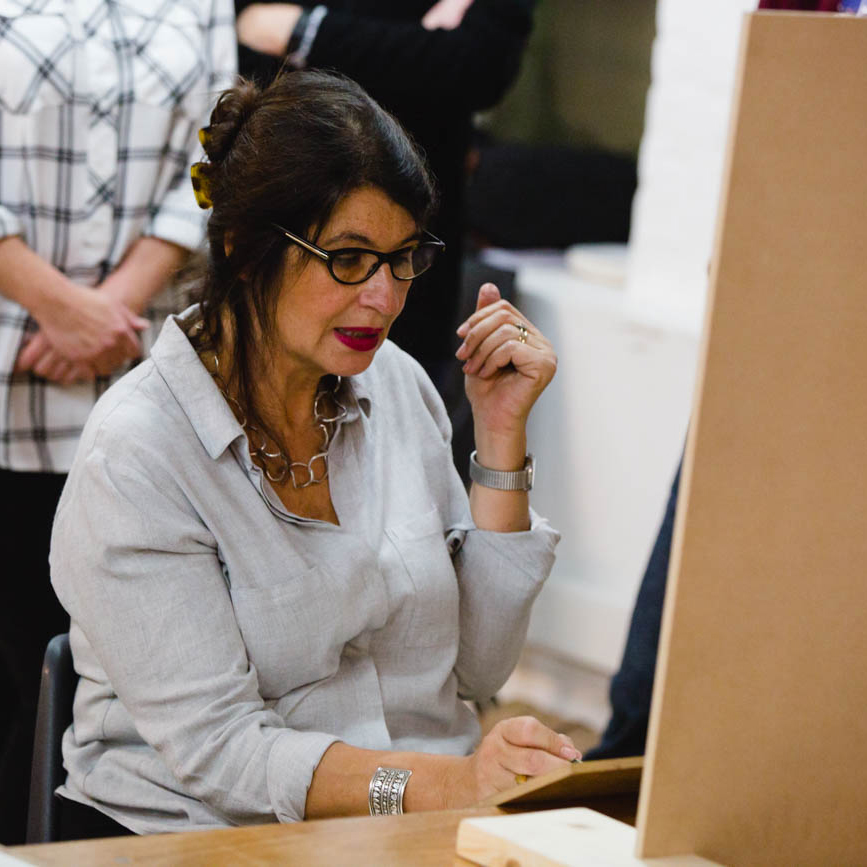 If you're itching to let out the creative in you, see our Life Drawing for Beginners classes, or explore the other offerings of our Art Department.
If you're itching to let out the creative in you, see our Life Drawing for Beginners classes, or explore the other offerings of our Art Department.
Francine Lawrence, who teaches Life Drawing privately and takes some of our Corporate Classes, lent us her artist's perspective for this piece. She is also City Academy’s How to Draw - Beginners and How to Draw - Improvers tutor. Her classes are fun, creative and relaxed, and she loves sharing her passion for drawing with a huge range of students, from complete beginners to nervous returners.




